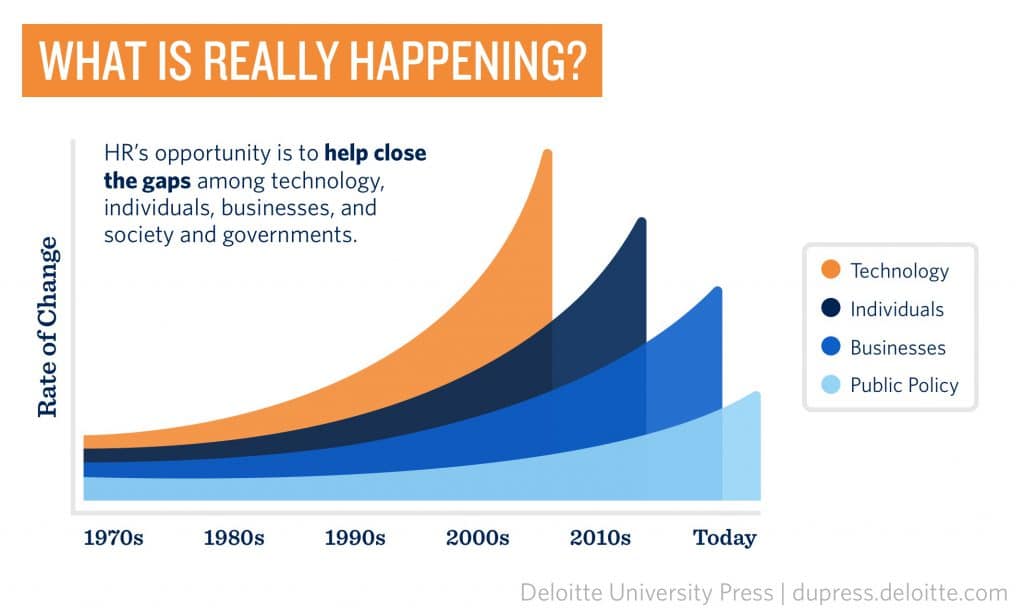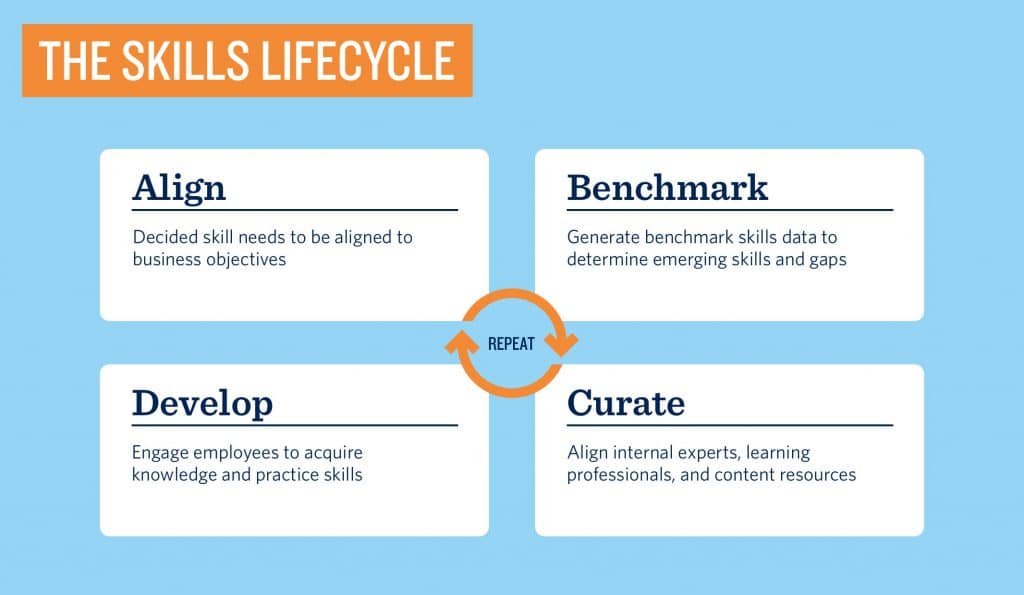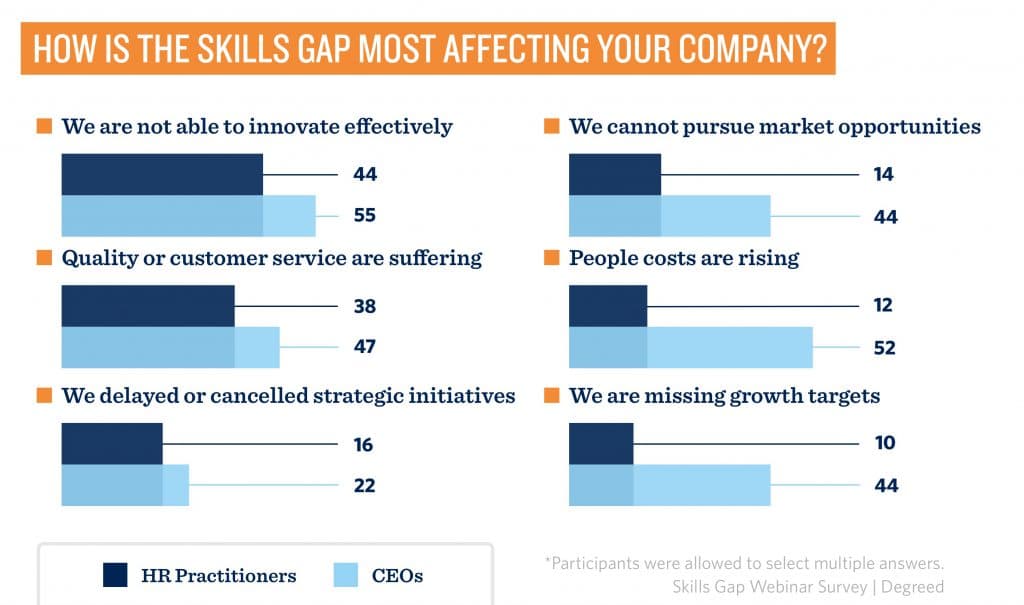Much to the chagrin of my inner 12-year-old, Back to the Future wasn’t spot on with all its predictions for our current lifestyle. Hoverboards are still a work in progress, cars aren’t flying yet, and we still haven’t been able to harness the power of a gigawatt. Still, the future has given us a few things to celebrate. My local gas station is patrolled by a robot security guard. My car is basically crash-proof and may even drive itself someday, and modern medicine continues to work miracles.
In the workplace, progress has been a bit slower. Memos have taken new shapes as emails and instant messages, I haven’t used a stapler since 2014, and the debate rages on about the value of annual performance appraisals.
This slow progress isn’t just in our heads. According to Deloitte’s Rewriting the Rules for the Digital Age, business adapts to technological change at half the rate we do in our personal lives. The public policy adopts at a pace 1/4 the rate of technological change, making it so business functions have a harder time evolving. Human Resources, which is tied closely to public policy work through regulatory and compliance management, may face the same challenges.

Throughout this four-part blog series, we’ll be honing in on The Skills Lifecycle. This forward-looking framework can help turn your HR teams into skill-building, perpetual-motion machines that can overcome the change curve. And don’t worry, this isn’t some complex Rube-Goldberg machine; it’s simple, it’s actionable, and it works.
“Now is the time to move away from an incremental gains mindset and embrace an ambition, to not only make existing work more efficient but to transform work itself.”
Ashok Belani, Executive Vice President of Technology, Schlumberger
The Skills Lifecycle is made of four steps:
The first phase of the Skills Lifecycle is alignment. Alignment comes from understanding your company’s objectives through the eyes or your CEO or line of business leaders and equipping the right people to make that work happen.

HR Alignment is the New Black
Imagine an HR team that’s so tightly aligned to its line of business counterparts that it doesn’t make budget requests separately. Let’s say the technology team is working to implement a new system. Part of their budget includes training programs sourced or curated with the partnership of an in-house learning and development expert. If the sales team wants to expand into new territory, they request funding for new sales team members and an accompanying sales enablement program with the advisement of their talent manager and learning partners.
In the New HR, administrative tasks like payroll, employee onboarding, and compliance management are increasingly automated, creating space for the company to create a winning culture.
The New HR is increasingly focused on what the business needs to win and aligning the human capital to achieve those objectives. These HR gurus will operate as embedded members of the line of business teams, utilizing a matrix-style reporting structure. They take a coaching role in the functions they support, giving ownership of talent to the managers who know their employees best. In the boldest organizations, Learning & Development and Talent Management become one, paving a clear path to promote from within.

This is #realtalk time. I speak to HR teams at companies large and small every week that don’t understand the objectives across their HR functions, let alone the functional business units. This lack of alignment shows up in the data. PwC’s 22nd CEO Survey identified the top concerns revolving around the skills gap for CEOs. But when we asked HR practitioners the same questions, we got different answers. Both HR practitioners and CEOs agree that innovation is stifled by the skills gap, but CEOs are about 3x more concerned than HR with missing growth targets, rising people costs, and pursuing market opportunities.
The aligned HR has powerful capabilities to create the skills and develop the talent companies need to meet these challenges. From there, they can place that talent in the right place and at the right time.
Here are some ways to improve your alignment today:
- Align Your Network. When was the last time you met with someone outside of your team? Outside of Human Resources? Introduce yourself, in person or virtually, to someone new. Ideally, your new contact is in a different function than you. Ask about the joys and challenges they face at work, especially related to areas that you might be able to impact. Donut is a free Slack integration tool that connects colleagues who don’t know each other well. Or just use your old-fashioned company directory.
- Align Your Objectives. Schedule a “one-over-one,” meeting with your boss’ boss. Ask about how the work your team does relates to the company objectives from their point of view. What about the objectives of the line of business leaders at their same level? Read Measure What Matters by John Doerr for company case studies on creating and cascading objectives through high-performing organizations.
- Align Your Time. Spend 1% more of your time every day on things that impact those discovered objectives. Ask yourself the Five Whys before embarking on a project or task. If along the way, one of your company’s top objectives doesn’t come up, this might be work to drop.
If you’re ready to rev up the DeLorean and fly even faster into the future with your company’s skill transformation, schedule a demo with one of our skills experts.
